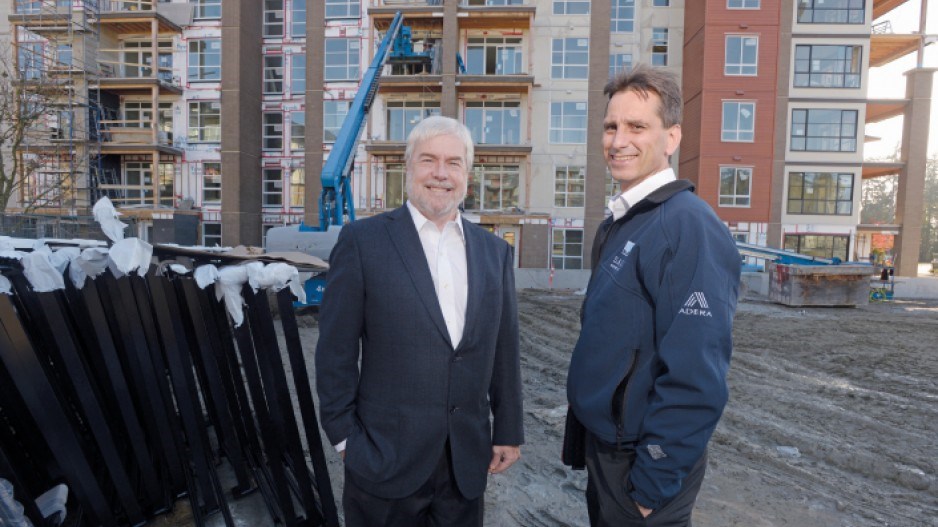Perhaps no other Metro Vancouver industry is as reliant on an efficient, fast supply chain as residential construction.
And the pressure on the chain is ratcheting up. B.C. saw the highest increase in residential building permits in Canada in August, Statistics Canada reports, as Vancouver residential permits shot up 13.6% to $582 million, compared to July, an ascension almost totally due to multi-family construction.
“We run with just-on-time deliveries,” said Adam Weir, project manager at Adera, one of Metro’s largest condominium builders. Right now, Adera has five multi-family projects under construction from North Vancouver to the Fraser Valley, including at bottleneck sites like the University of B.C.
This involves annual delivery of 400 to 500 kitchen appliance packages, shower stalls, miles of tiles and hardwood flooring, not to mention tonnes of lumber, drywall and specific products from drainage tiles to roof shingles.
Adera president Norm Coutie estimates the company purchases $50 million worth of building materials every year, including at least $3 million in lumber and a similar amount for stoves, fridges and dishwashers.
“Scheduling is absolutely critical,” said Weir. “You want to have your scheduling done early and subject to continual updating.” He explained that, with appliance packages as an example, delivery is timed from the supplier’s warehouse to the construction site in batches of five residential units. “We often don’t have on-site storage capacity.”
As part of a company sustainability program, Adera tries to source its material from local suppliers, relying on B.C. manufacturers of windows and doors, for instance, and insisting on local lumber. But Coutie concedes that some suppliers could be shipping items such as tiles or faucets from anywhere in the world. Much of the hardwood flooring, for example, now comes from China.
“We do the quality control, but the suppliers handles the importing,” Coutie said.
To further complicate and crowd the construction site, many sub-contractors are working under supply-and-install contracts, meaning they are also showing up with truckloads of material.
Weir said transporting through Vancouver’s congested streets remains the biggest challenge, “and that is not getting any better.”
Concrete trucks idling in traffic jams are a continual concern, he said, because pouring the concrete is often the prelude to other work.
Ironically, the apparently non-stop construction in Vancouver leads to traffic delays that stall other construction projects.
“I drive along West Georgia Street and there are two lanes blocked off for work on the Telus tower,” said Coutie. “Just imagine trying to work a concrete truck through that.”
Sustainable issues also add two-way traffic to the supply chain logistics. Nowadays, instead of being trashed, appliance packaging and pallets are removed from the sites by the supplier to be recycled. As well, Adera sets up recycle bins for plastic, metal, wood and other waste, all of which has to be hauled away, often by separate trucks.
Sustainability also adds a challenge to large-scale B.C. commercial and institutional construction, where building to LEED standards is now virtually mandatory.
For example, LEED encourages sourcing of materials within 800 kilometres of the construction site, explained Rick Eggert, construction superintendent with general contractor giant PCL Constructors Westcoast Ltd. PCL has between 15 and 20 Metro construction projects running at any time, valued at up to $1 billion.
At PCL’s BC Place re-roofing project, however, the steel truss beams came from Quebec, China and Eastern Europe but LEED allowed a concession based on the steel’s recycling potential. When PCL built a new hospital in Burns Lake, however, the LEED distance restrictions added greatly to supply chain cost.
“A box of nails in Burns Lake can cost 58% to 75% more than in Vancouver, due to price of truck transport,” Eggert said.
Metro Vancouver’s construction supply chain issues comes down to traffic, and getting permission for street closures and site access, which can often mean working off-hours or on weekends, Eggert said.




